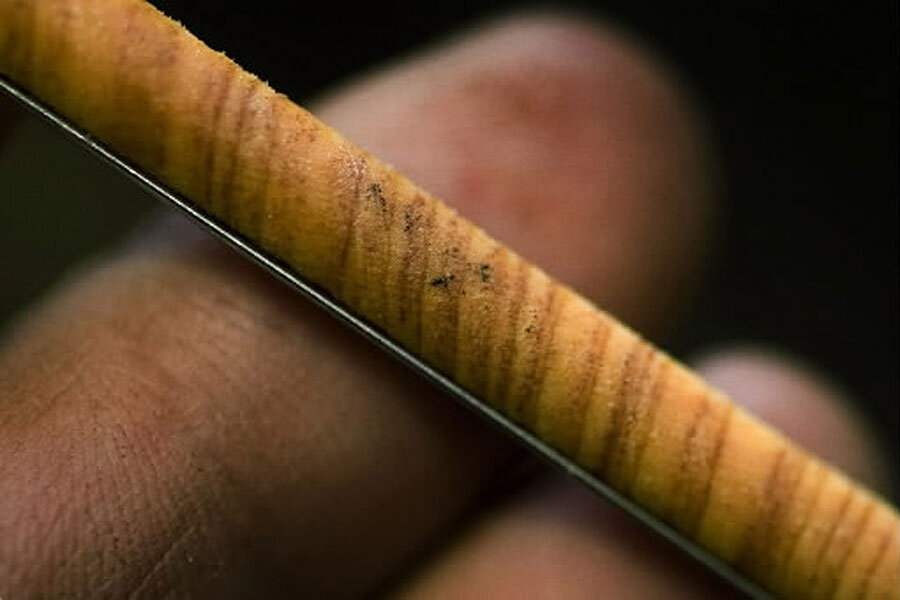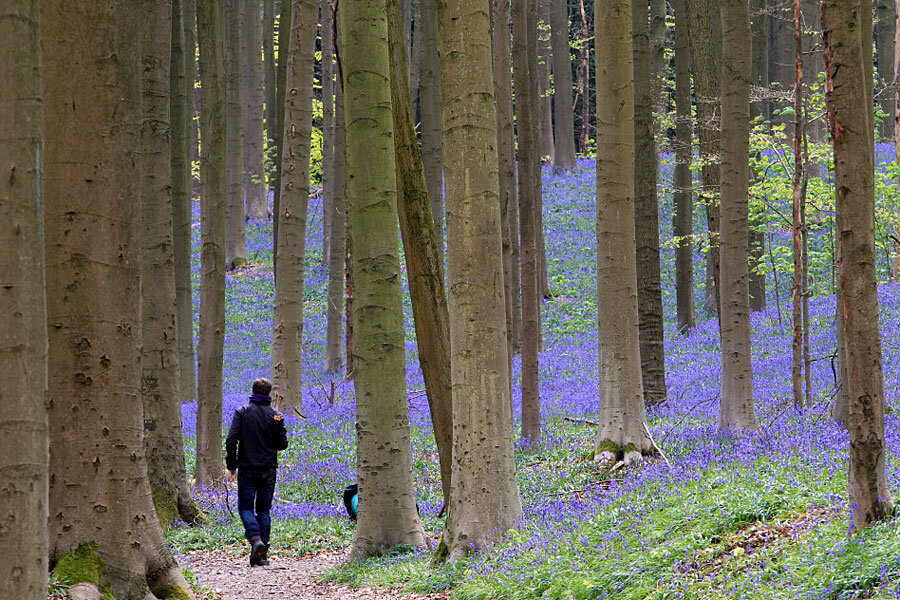What do trees tell us about climate change?
Loading...
Trees don’t just provide the paper for history books. They actually write the historical records themselves.
Tree-rings, new layers of wood added to a growing tree each year, record climatic data annually throughout a tree’s life. Ancient trees provide a record of drought, rainfall, and other climatic variations. And that record could help scientists better understand current and future climate trends.
Dendrochronologist Edward R. Cook and his team at the Lamont-Doherty Earth Observatory of Columbia University have been working to map ancient droughts and downpours in forests across the globe, using the trees themselves as a guide. His latest map, the Old World Drought Atlas, covers Europe, the Middle East, and the Mediterranean rim of Africa, as described in a paper published Friday in the journal Science Advances. Previously, Cook and his colleagues created the North America Drought Atlas and the Monsoon Asia Drought Atlas.
“Trees give us exactly dated annual records of climate variability,” Cook tells The Christian Science Monitor in an interview. Each ring represents a year of growth and trees grow differently depending on rainfall, temperature, and other climatic factors.
“A narrow ring would mean that it was a dry year and a wider ring would indicate better moisture conditions for growth,” Cook explains. So a drought year would produce a narrower ring.
“There are other measures in the tree-rings that can also provide other climate information. Sometimes you look at wood density changes, for example, and that can reflect how warm or cold it is during the summer growing season,” says Cook. A warmer summer will produce more dense wood in the year’s ring.
These tree rings also match climate extremes documented by humans.
The rings that align with the Great Famine of 1315 to 1317 in Europe tell a tale of oversaturated crops. Documented history suggests that the famine was caused by wet conditions that led to massive crop failure. “The tree-rings reflect that beautifully,” says Cook.
“The kind of information you can get from the drought atlas also informs us about the climate conditions associated with historical events in the past,” he says.
Across all three drought atlases, Cook and his colleagues noticed a period of megadroughts, prolonged dry periods, about one thousand years ago during the Medieval period. This dryness seems to have been natural variation.
But, says Cook, with greenhouse-gas-induced climate change already warming and drying many regions across the globe, the tendency for megadroughts to occur naturally as well could mean compounding droughts.
Cook hopes that his drought atlases will help scientists better understand the mechanisms involved in drought.
Tree rings are called rings because they appear as concentric circles on the stump of a tree when it’s chopped down. But, says Cook, “We don’t kill trees to extract this information.”
Instead, the scientists take just a sliver of the tree to examine. “We use a device called a Swedish increment borer that extracts a long dowel-like piece of wood from the tree, about five millimeters in diameter,” Cook says. That core of wood displays all the rings, the entire life-history of the tree.
“This does not damage the tree in any meaningful way,” Cook says. In fact, Cook has returned to trees he sampled 20 years earlier to sample them again. And, he says, “the tree lives on for many many years after that.”
“Trees are remarkable living things out there that are like rain gauges and thermometers sitting out there for decades,” or more, Cook says. “They’re one of the most remarkable terrestrial organisms in the world.”









